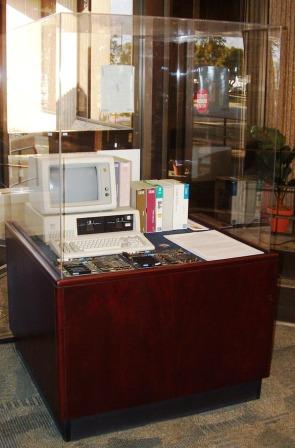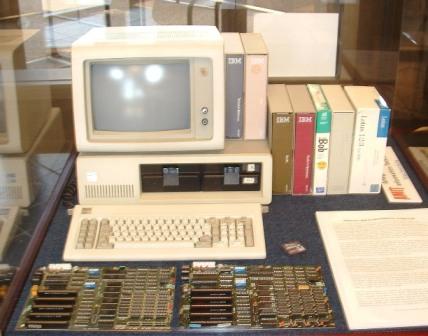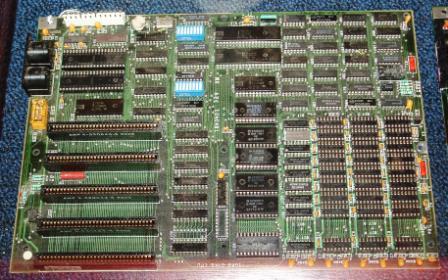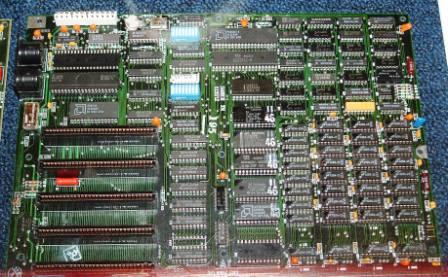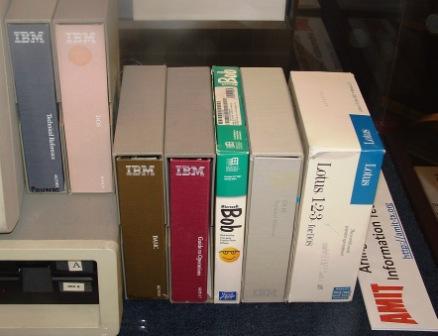The MITA display on the first floor of the Arlington Public Library currently contains an original IBM 5150 Personal Computer.
This is an original IBM PC (Personal Computer) model 5150. IBM had watched the microcomputer market grow from a kit building hobby market to a potential billion-dollar industry. They decided that it was time to jump in. IBM had already made one failed attempt to crack the market with their IBM 5100 but it was much too exxpensive. They decided to make their own personal computer line and develop a brand new operating system to go with it. The secret plans were referred to as "Project Chess." The code name for the new computer was "Acorn." Twelve engineers, led by William C. Lowe, came to Boca Raton, Florida, to design the "Acorn." On August 12, 1981, IBM released their new computer, re-named the IBM PC. The "PC" stood for "Personal Computer" making IBM responsible for popularizing the term "PC."
Less than four months after IBM introduced the PC, Time Magazine named the computer "man of the year." The IBM PC was a runaway success, but not because the PC was a cutting edge product, as it wasn't. What created all the interest was that it was built by IBM. At that time IBM dominated the computer market. A catch phrase in the industry was "Nobody ever got fired for buying IBM." The original PC led to many standards still found in fairly modern PCs, such as the ISA bus. A standard 8 bit card from a 25 year old IBM PC can be put it into many Pentium computers running at 2-3 GHz and it will work fine.
The first IBM PC ran on a 4.77 MHz Intel 8088 microprocessor. It was equipped with 16 kilobytes of memory, expandable to 64KB. The PC came with one or two optional 160KB floppy disk drives and an optional color monitor. The price started at $1,565 - nearly $4,000 today. What made the IBM PC different from previous IBM computers was that it was the first one built from off the shelf parts and marketed by outside distributors. The Intel chip was chosen because IBM had already obtained the rights to manufacture the Intel chips for use in its Displaywriter Intelligent Typewriter.
This PC is an early model PC made between 1981 and 1983. These early machines came with only 16 or 64KB RAM on the motherboard and were so marked. In April 1983 the motherboard was changed to allow the use of larger 64kb RAM chips allowing up to 256KB RAM to be installed. Both machines were capable of being expanded to 640KB through the use of expansion cards. Another mark of the early PC is the use of the INTEL 8088. In later PCs IBM used an AMD version of the 8088.
The PC was sold in a number of configurations. The basic model had no floppy drives and only 16KB of RAM. Program storage was supposedly to be on a cassette tape drive. The PC came with Microsoft Cassette BASIC built in and it will boot up in that BASIC interpreter if it does not detect an operating system on a floppy drive floppy. The BASIC interpreter is contained in 5 read-only memories, or ROMs. This PC also has an IBM MDA (Monochrome Data Adapter) and is connected to an IBM 5151 color monitor.
This IBM 5100 was declared as surplus by the UT Arlington Electrical Engineering Department.


